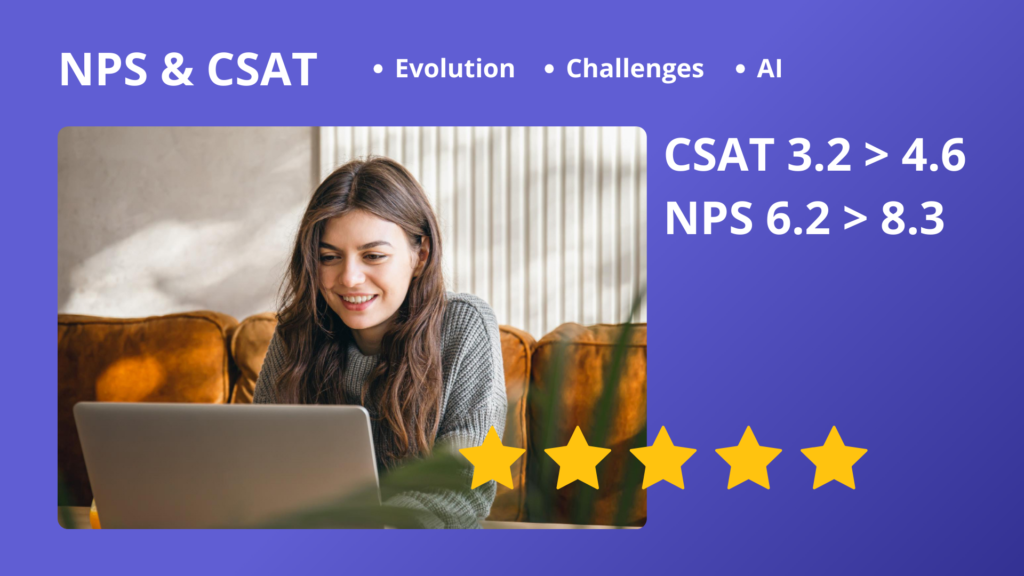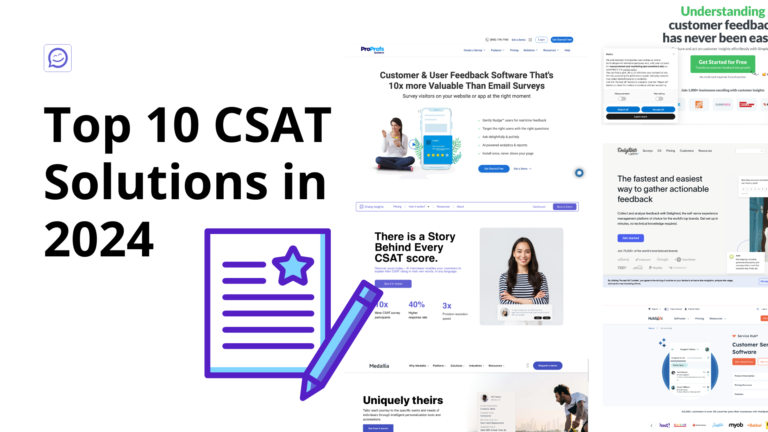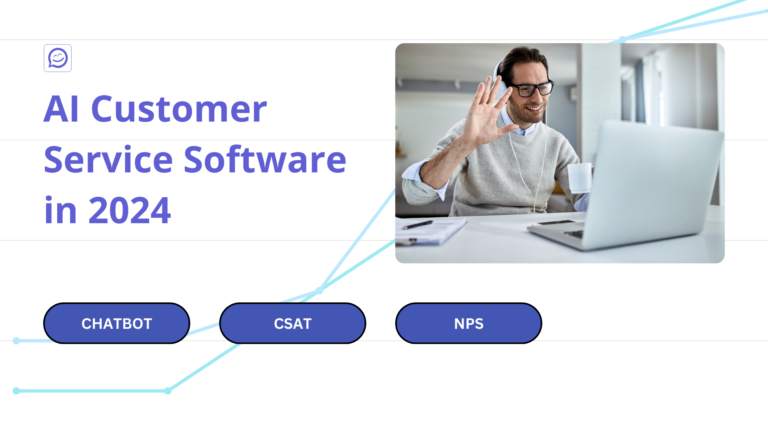Customer satisfaction metrics like CSAT and NPS are crucial. This post explores how CSAT and NPS metrics are evolving together with AI and impacting companies today.
Customer Satisfaction Score, being an older metric, has undergone significant changes over the years. Initially, it focused on individual interactions, providing detailed insights into specific customer experiences. Now, its role has expanded, often being integrated into broader customer experience reports.
Net Promoter Score, on the other hand, is widely used but often misunderstood. While it offers valuable trend data, many companies struggle to interpret its implications accurately.
Understanding CSAT and NPS
Customer Satisfaction Score is a metric that measures customer satisfaction with a specific interaction, product, or service. CSAT is aimed at customer service and support teams.
Historically, the score has been a staple in customer feedback, offering immediate insights into customer experiences. Companies typically use a scale or stars, often 1 to 5, to measure satisfaction, making it a straightforward tool for assessing customer sentiment.
This being said, the score is an amazing example of how something may look great on paper but does not work in reality. Later we explore the main challenges that come with Satisfaction Score.
Yet, as it means customer satisfaction score it is great input for businesses to understand how good they are doing their job. A one to five-star rating also makes it easier for people to use the score and following up questions explores each unique case separately.

Explore the power of AI CSAT Read More
On the flip side, NPS (Net Promoter Score) works for the whole organization, especially the customer success and marketing teams together with C-level management. NPS, introduced as a measure of customer loyalty, asks customers how likely they are to recommend a company’s product or service to others on a scale of 0 to 10. This metric categorizes respondents into Promoters, Passives, and Detractors, providing a clear indicator of overall customer sentiment and loyalty.
Unlike SCAT, it has a more complex effect on the business. We may even call it affiliation power since the highest score also raises the possibility that one person will invite another creating a strong viral loop. Companies also look at how beyond the score to leverage promoters such as adding a ¨bring a friend¨ discount or competition for a prize.
Evolution of Customer Success and Promoter Scores
CSAT (Customer Satisfaction Score) was initially all about individual interactions. Companies use it to get quick feedback on how all customers experience the product or service like checking the room temperature. Over the last ten years, though, there’s been a shift.
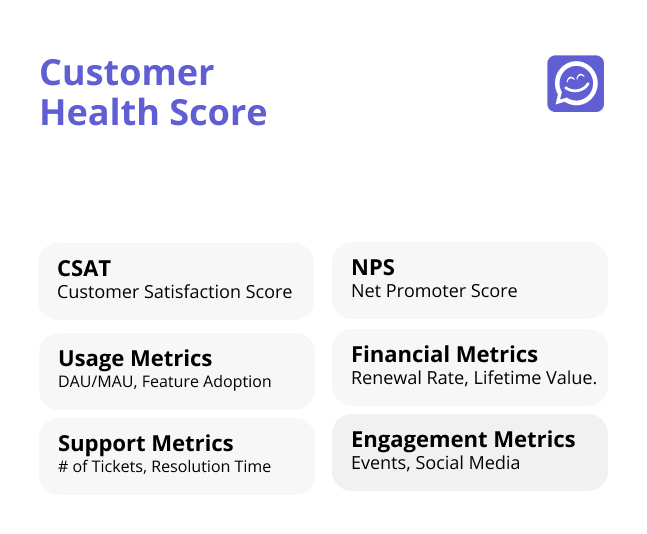
Now, Satisfaction Score is still integrated into broad customer health scores but segmented by different buyer personas using the product. This means it’s used as part of a bigger picture, helping companies analyze customer satisfaction per the group giving more reliable data on specific audiences that might use different features of having different use cases of the product.
Changes in CSAT Usage:
- Traditionally focused on individual interactions.
- Now integrated with broader customer health scores.
- Used for larger trend analysis.
Net Promoter Score, on the other hand, has become a must metric in customer success strategies. It’s popular because it’s simple but interpreting NPS can be tricky.
Other companies find it challenging to understand what exactly is driving their negative or positive feedback, which makes it harder to take actionable steps based on this metric.
Overemphasis, Low response and other challenges with CSAT and NPS
Overemphasis on Metrics
One of the big pitfalls is putting too much emphasis on just the CSAT and NPS scores without really digging into the context behind them.
It’s like looking at a scorecard without understanding the game. Imagine a company sees its NPS score drop from 70 to 60. They might panic and start making broad changes, like revamping their entire customer service team. But without understanding the why, they might miss the real issue—like a recent product glitch that’s temporarily annoyed some customers.
Another example could be a company noticing a Customer Success score of 85 and celebrating it as a success. However, if they don’t dig deeper, they might overlook that the score is high only because of a small group of highly satisfied customers, while the majority are only moderately satisfied.
If you don’t understand why a score is high or low, you might end up with strategies that don’t address the real issues. So, it’s super important to go beyond the scores and explore what’s driving them to get actionable insights.
Low Response Rates
Another challenge is the low response rates for both scores. Typically, CSAT response rates hover around 5%, and NPS might be a bit higher, but not by much. This low engagement can throw a wrench in the works because it makes it hard to get a statistically relevant sample of feedback. When only a small fraction of customers are responding, it’s tough to draw meaningful conclusions or see the bigger picture. So, getting more people to engage with these surveys is crucial for making the data truly useful.
Lack of customer experience tracking
Some companies operate without CSAT or NPS scores, leaving them essentially flying blind and missing out on critical insights into customer satisfaction. They often rely on unreliable review feedback or gut feelings. For example, they might think their product is well-received based on a few positive comments while not noticing broader dissatisfaction.
In the ever-evolving world of business analytics, new tools and reports frequently emerge, promising fresh insights and innovative approaches. Both scores, however, remain universal and reliable, providing a consistent framework for measuring customer satisfaction and loyalty across industries. This makes them invaluable, even as new tools come and go.
Effective Implementation of CSAT and NPS
Best Practices for Customer Satisfaction Score
To get the most out of your Customer Satisfaction measurements, there few things. First, make sure you’re focusing on those specific interactions. It’s all about getting precise insights into how each customer or group feels about a particular service experience.
Don’t fall into the trap of overgeneralizing scores—always consider the context behind each interaction. And don’t forget to engage directly with your customers. A good or bad score is not enough, follow up is a must to know more but also show care toward customers.
- Focus on specific interactions for precise insights.
- Avoid overgeneralizing; consider interaction context.
- Engage directly with customers to fully understand feedback.
- Follow up
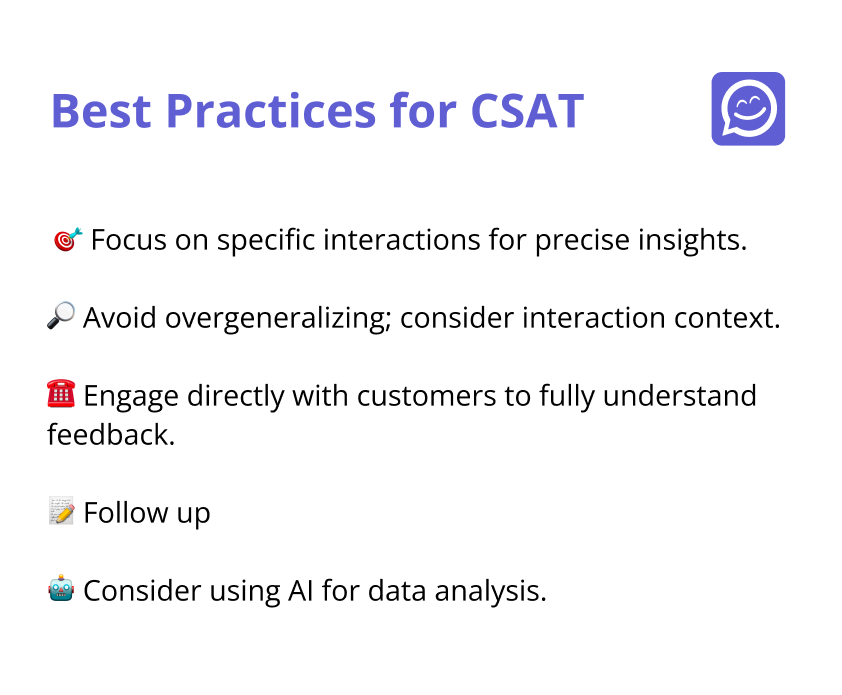
Best Practices for Net Promoter Score
When it comes to Promoter score, you want to dig deep into what’s driving those scores. Don’t just look at the number—figure out why it’s high or low. Use it as a part of a bigger customer success strategy. This case is about seeing the bigger picture and understanding overall customer loyalty. And remember, you should regularly review and tweak your NPS strategies. Customer feedback is always evolving, so your approach to NPS should evolve with it.
- Identify and analyze drivers behind NPS scores.
- Integrate NPS into a broader customer success strategy.
- Regularly review and adjust NPS strategies based on evolving feedback.
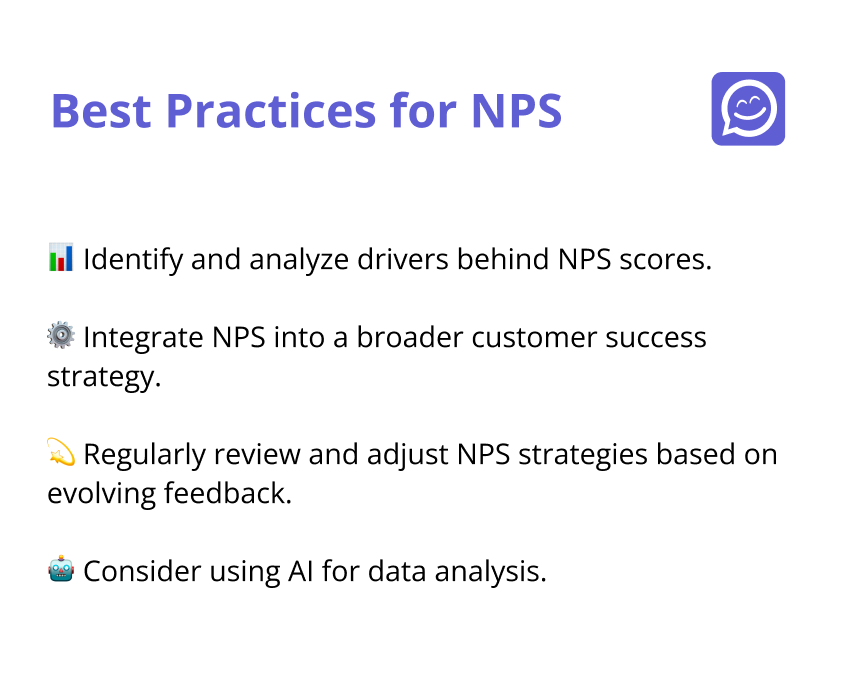
Role of Technology in Enhancing CSAT and NPS
New nature of CSAT with Artificial Intelligence
AI is shaking things up when it comes to feedback surveys. Instead of the old-school, static forms, AI-driven tools are now making it possible to have actual conversations with customers. This conversational feedback approach is a game-changer. It engages customers in a more meaningful way, which naturally boosts response rates.
Another huge benefit is the analysis part. Previously, sifting through tons of feedback responses was a tedious, manual process. Now, with AI, you can analyze all that feedback in one click. In just seconds, AI can spot patterns and identify emerging problems, making it much easier to take swift action.
Overall, AI not only makes collecting feedback more dynamic but also streamlines the entire process from collection to analysis. This ensures that companies can respond to customer needs more quickly and effectively, enhancing the overall customer experience.
AI in CSAT Surveys: Now vs. Then
- Then: Static forms for feedback collection.
- Now: Conversational AI for dynamic feedback.
- Then: Manual analysis of feedback responses.
- Now: Instant, one-click analysis finding patterns and problems.
Future Trends in Customer Success Metrics
Customer health scores are becoming a big deal in customer success. They combine CSAT, NPS, and other indicators to give a full picture of customer satisfaction. These composite metrics are super helpful because they offer a more detailed view of customer health. This means companies can see potential areas for improvement more clearly.
Real-time feedback systems are another exciting trend. Thanks to new technologies, companies can now capture customer feedback instantly. This real-time approach means businesses can act on feedback right away. It not only boosts the customer experience but also provides timely insights that can shape business strategies.
Future Trends in Customer Success Metrics:
- Customer Health Scores
- Combine CSAT, NPS, and other indicators.
- Offer a holistic view of customer satisfaction.
- Provide detailed insights into customer health.
- Real-time Feedback Systems
- Enable instant feedback capture.
- Allow immediate action on customer feedback.
- Enhance customer experience with timely insights.
Conclusion
CSAT and NPS are vital tools in the arsenal of modern customer success strategies. By evolving these metrics and integrating advanced technologies, businesses can gain deeper insights into customer satisfaction, driving better outcomes and fostering long-term loyalty.
Businesses are encouraged to review and enhance their CSAT and NPS strategies, leveraging AI-driven solutions to gain richer customer insights. Explore innovative technologies from Chatty Insights to stay ahead in the competitive landscape and ensure exceptional customer experiences.
